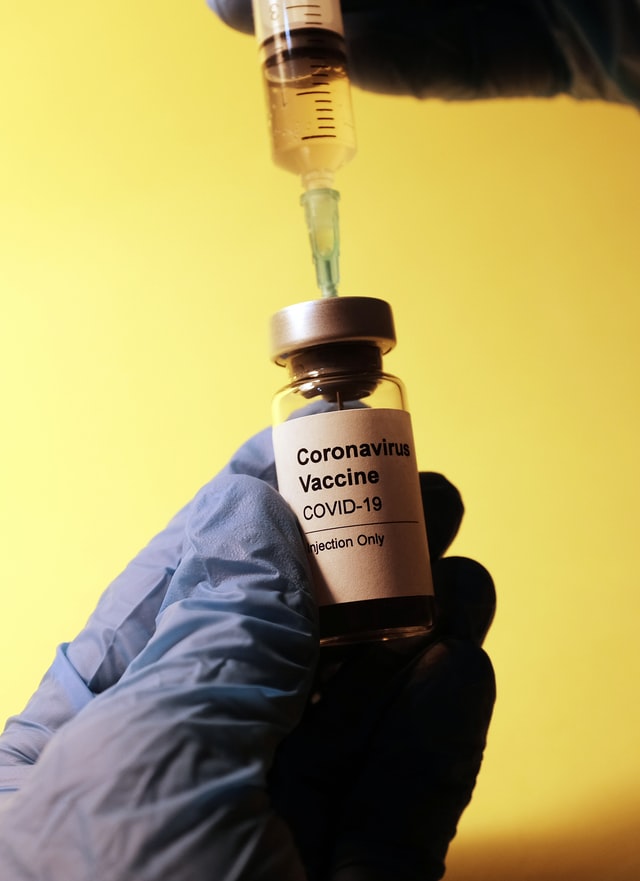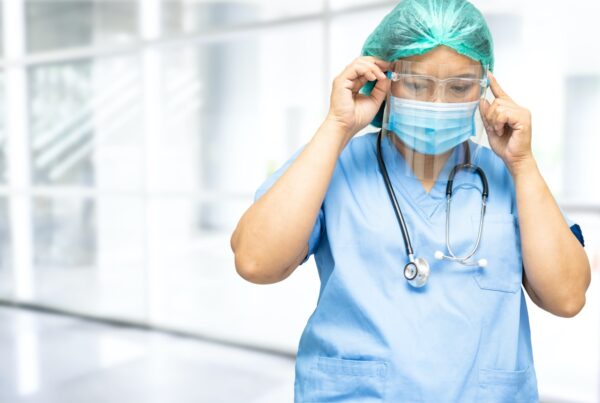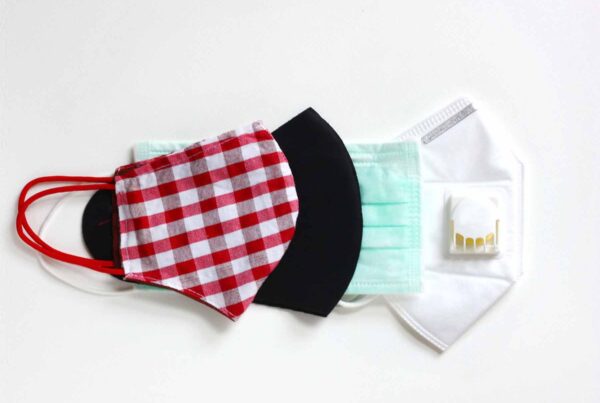
With any major public health innovation like vaccines, there are bound to be lots of questions. Get up-to-date on what you need to know about masks and the COVID-19 vaccine.
Can I get COVID-19 from the Pfizer and Moderna vaccines? What are they made of?
No, it is impossible to get COVID-19 from the Pfizer and Moderna vaccines because they do not use a dead or weakened version of the virus, like vaccines for some other diseases (e.g. MMR, chickenpox, etc.). Instead, these are mRNA vaccines, which use targeted cellular instructions to help your body develop an immunity to COVID-19.
If the vaccines don’t contain the virus that causes COVID-19, then how do they work? Why can they sometimes have side effects like a fever?
The mRNA in the vaccines serve as templates that instruct your cells to manufacture the coronavirus spike protein—not the virus itself, just the spikey, binding protein on the surface that you might see in illustrations of the virus. These proteins themselves are harmless, and they don’t have the capability to self-replicate like the coronavirus itself, so once all the mRNA instructions in the vaccine are used up, no more protein will be created.
Once the spike proteins are created and released into your body, they float around innocently until your immune system recognizes them as a foreign object. At that point, white blood cells called macrophages swarm and destroy the spike protein, leaving behind markers of what the proteins were, called antigens. The antigens prompt the production of B-lymphocytes and T-lymphocytes, which are different types of white blood cells that are specialized to the antigens marking the spike protein and produce antibodies to destroy them.
These lymphocytes act as “memory cells,” remaining in the bloodstream to produce antibodies whenever they encounter the spike protein again. Since the spike protein is the key mechanism by which the coronavirus binds to your cells, your body now has a targeted response to prevent that binding action from occurring, creating immunity to COVID-19.
A common misconception about vaccines is that they can make you sick because they often cause fever. However, it is important to know that a fever is part of your body’s natural immune response, and getting one as a result of the vaccine actually means the vaccine is doing its job correctly. Your body is working hard to create the memory cells necessary to fight off the virus in preparation for when it really comes.
Read more on how vaccines work and side effects.
If I get the vaccine, do I still have to wear a mask?
YES you still need a mask, and here’s why:
While the Pfizer and Moderna vaccines are 95% and 94.1% effective respectively, this metric is only related to the ability to prevent symptomatic COVID-19. What this means is that while a fully vaccinated person is protected from getting sick with COVID-19, they can still carry and transmit the virus asymptomatically—just like how people with no symptoms were able to transmit the virus before the vaccines.
This also makes sense intuitively with the way the vaccines work. The vaccine is injected deep into muscle tissue in the upper arm to stimulate an effective immune response and produce antibodies to correctly identify and attack the virus. However, while antibodies circulate throughout the body, the coronavirus can still replicate quickly in the nasal passage before enough antibodies can attack it there. This is why mucosal vaccines, like nasal spray vaccines for the flu, are better than intramuscular injections at preventing transmission of respiratory viruses. Until such a mucosal vaccine is available for COVID-19, you can easily spread the virus through your nose while vaccinated—even if you have all the protection you need from the virus making you sick.
For this reason, it is critically important that until the vaccine has been administered to a critical mass of the population that we all continue to follow public health guidance to protect those around us. This includes wearing a mask, staying at least six feet away from others, avoiding crowds, washing hands often, following CDC travel guidance, following quarantine guidance after exposure to someone with COVID-19, etc.
Ultimately, as A. David Paltiel of the Yale School of Public Health said, “We’ll get out of this pandemic faster if we give the vaccine less work to do.” In the meantime, continuing to wear a mask and maintain social distancing can prevent the virus from continuing to spread at incredibly high rates and reduce the burden on healthcare and front line workers, who are still struggling to acquire the necessary PPE resources to keep themselves safe as the pandemic rages on.
Read a health worker’s perspective on why she still wears a mask after receiving the COVID vaccine.




